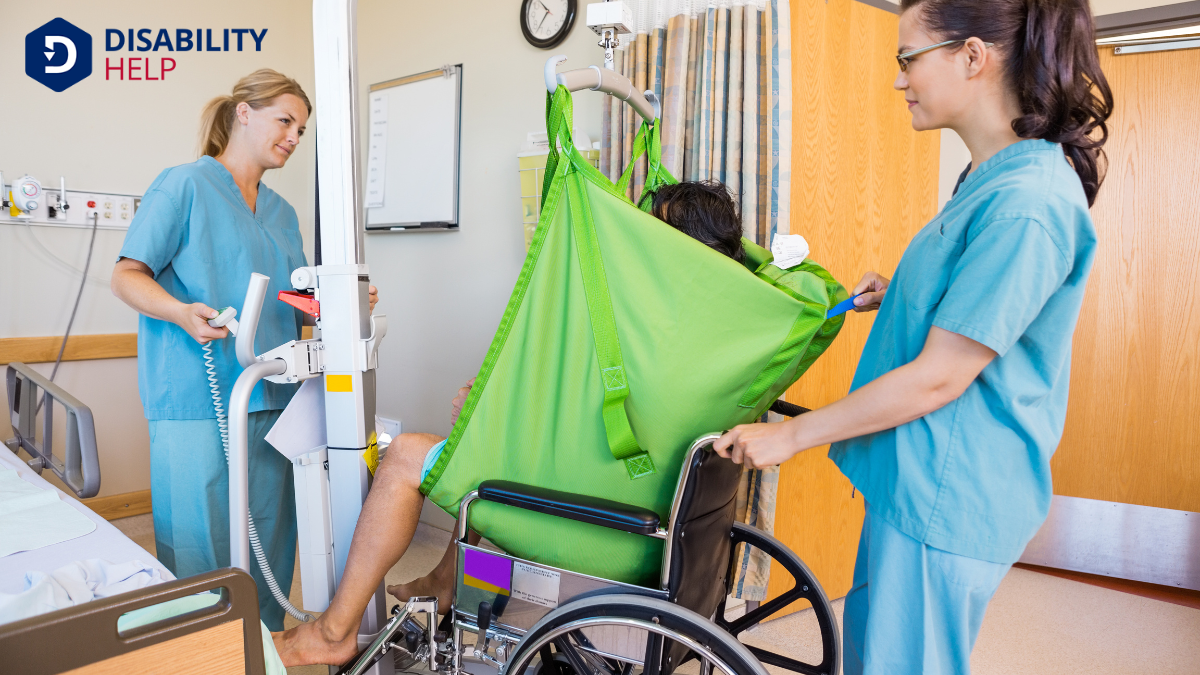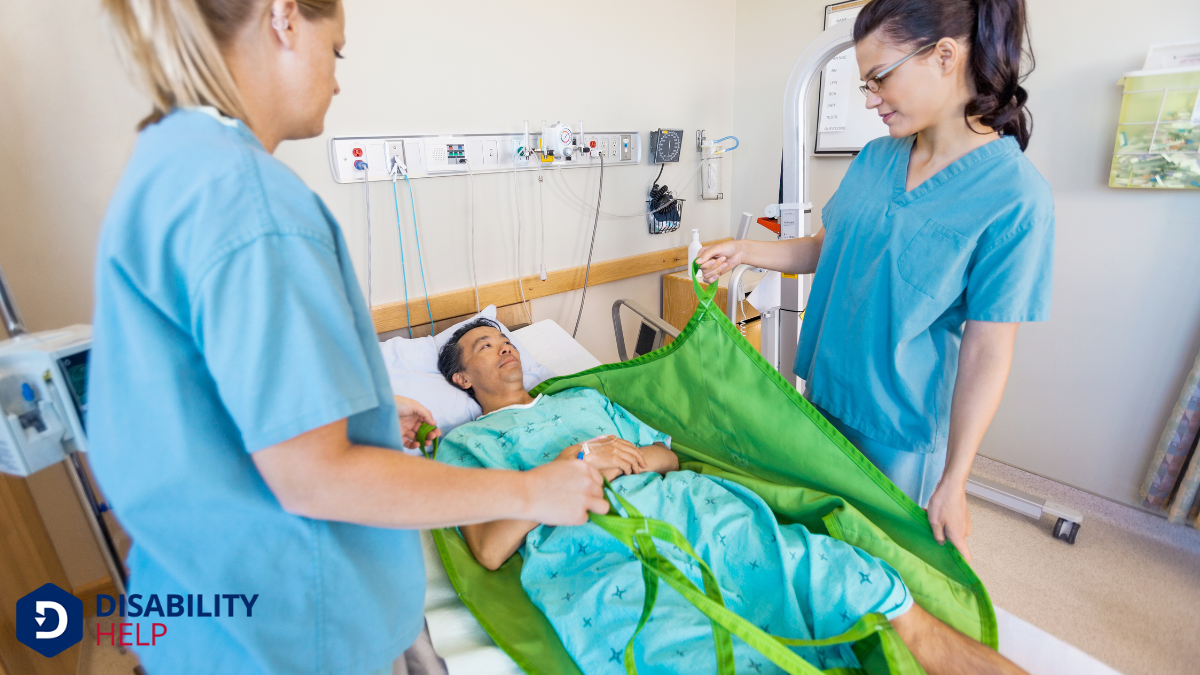When we consider assistive devices for patients who need limited help with standingThe legal right to bring a lawsuit, which requires that the individual bringing the suit has a direc..., transferring, or ambulating, it’s essential to weigh the pros and cons of options like walkers and canes. These tools offer varying levels of support and mobility, but how do we determine the right fit for each individual? By examining specific needs, preferences, and environments, we can guide our choice towards enhancing safety and independence. Let's explore how to make the best decision.
Key Takeaways
- Canes offer lightweight mobility support for those needing minimal assistance with balance while standing or ambulating.
- Two-wheeled walkers provide greater stability than canes, requiring less lifting effort during ambulation.
- Transfer boards facilitate safe and smooth surface transfers with minimal assistance, enhancing independence.
- Gait belts aid caregivers in providing controlled support for standing and transferring, increasing safety.
- Four-wheeled walkers (rollators) include seating and braking features, offering balance support and rest options during ambulation.
Understanding the Needs of the Patient
Why is it essential to understand a patient's needs when selecting an assistive device?
When we prioritize a patient's unique circumstances, we guarantee the chosen device genuinely supports their lifestyle, promotes independence, and enhances quality of life.
Recognizing factors such as physical abilities, home environment, and daily routines allows us to make informed decisions that align with their goals.
Evaluating the Range of Assistive Devices

When exploring the vast world of assistive devices, where do we start to guarantee the best fit for a patient?
First, we should consider the specific needs identified in our previous discussions. With this foundation, we can evaluate the array of options available.
Walkers, crutches, and transfer boards each serve distinct purposes, from providing balance to facilitating safe transfers.
It’s essential to assess the patient's physical abilities, home environment, and personal preferences.
The Role of Canes in Mobility Support
Having assessed various assistive devices, let’s focus on canes as a pivotal tool for enhancing mobility.
Canes are often our go-to for those needing just a bit of support while standing or walking. They’re simple yet effective, offering stability and confidence with each step.
Here’s what makes canes so beneficial:
- Lightweight Design: Easy to handle and carry.
- Adjustable Height: Fits various user heights, ensuring comfort.
- Variety of Grips: Options like foam or ergonomic grips for better comfort.
- Compact Size: Convenient for travel and storage.
- Affordability: Budget-friendly, making them accessible to many.
Walkers: Types and Benefits
Walkers provide an essential solution for individuals needing more support than canes offer. They’re designed to offer stability and balance, reducing the risk of falls.
When we explore walkers, we find several types tailored to different needs. Standard walkers have no wheels, requiring us to lift them with each step. They’re ideal for those needing maximum stability.
Two-wheeled walkers allow smoother movement, as they glide over surfaces without lifting. Four-wheeled walkers, or rollators, offer the most mobility freedom, equipped with brakes and a seat for resting.
Let’s remember, selecting the right walkerA mobility aid with a metal frame and sometimes wheels, used by individuals who need additional supp... involves considering the user’s strength, balance, and environment. By understanding these options, we can help guarantee safety and independence in daily activities.
Exploring Transfer Boards for Safe Movement

Let's explore how transfer boards can assist us in moving safely and efficiently.
We'll look at the different types available and how each is designed to meet specific needs.
Types of Transfer Boards
Transfer boards come in several types, each designed to aid safe movement for those needing assistance. Understanding these variations helps us choose the right fit for our specific needs.
A few common types include:
- Standard Transfer Boards: Typically made of wood or plastic, they provide a sturdy surface for short transfers.
- Curved Boards: With a slight arc, they're excellent for maneuvering around obstacles like wheelchair wheels.
- Bariatric Boards: Constructed for heavier individuals, offering extra strength and support.
- Foldable Boards: Easy to transport and store, ideal for travel or limited space.
- Slide Boards with Hand Holes: Feature cutouts for better grip, enhancing safety during transfers.
Benefits of Transfer Boards
Having explored the various types of transfer boards, it's clear that each offers distinct features tailored to different mobility needs. Their primary benefit lies in promoting safe and smooth shifts from one surface to another. By reducing the need for lifting, transfer boards minimize the risk of injury for both caregivers and patients. They empower patients, enhancing their confidence and independence during movement.
Additionally, transfer boards are versatile, accommodating various situations such as moving from a wheelchair to a car or bed. They’re designed with different materials and shapes to meet specific requirements, ensuring stability and comfort.
When we consider the benefits, it’s evident that transfer boards play a key role in improving the quality of life for those needing limited assistance.
Gait Belts: Enhancing Stability and Safety
Let's explore how gait belts can enhance both stability and safety for those needing assistance.
When used correctly, these belts offer significant benefits by providing support during movement and reducing the risk of falls.
Together, we can guarantee proper usage to maximize their effectiveness and improve overall mobility.
Proper Gait Belt Usage
Gait belts, essential tools in caregiving, enhance both stability and safety for individuals needing assistance with mobility. When we use them properly, they become invaluable.
Let’s explore the correct usage to guarantee effectiveness:
- Placement: Position the belt around the person’s waist, over clothing, and not on bare skin.
- Tightness: Secure it snugly, allowing room for two fingers to fit between the belt and body.
- Grip: Hold the belt from underneath, providing a firm grasp for better control.
- Communication: Always inform the person about each step we’re taking to foster trust and cooperation.
- Body Mechanics: Use our legs, not our back, to support the person, preventing strain on ourselves.
Benefits of Gait Belts
How do gait belts revolutionize caregiving for those needing mobility assistance? They offer a simple yet effective way to enhance stability and safety.
By securing a gait belt around a patient’s waist, we can maintain a firm grip, reducing the risk of falls during transfers or standing. This tool allows us to guide movements with confidence, ensuring both the patient’s and caregiver’s safety.
Gait belts also foster patient independence. As we assist with minimal intervention, patients can focus on improving their balance and strength. This encourages a sense of empowermentThe process of gaining control, authority, and power over one’s life, often used in the context of... and dignity.
Additionally, using gait belts can decrease physical strain on caregivers, minimizing the risk of injury. By incorporating gait belts into our caregiving practices, we create a safer, more supportive environment.
Assessing the Use of Wheelchairs
When considering mobility solutions, how do wheelchairs stand up as an option for those with limited help?
Wheelchairs offer a reliable means of getting around, especially when standing or walking isn’t feasible. They bring a sense of independence and ease to everyday life.
Let’s explore what makes them a good choice:
- Safety: Minimizes fall risk, providing stability.
- Mobility: Facilitates movement within and outside the home.
- Comfort: Cushioned seating guarantees prolonged use without discomfort.
- Customizability: Options for manual or powered models suit different needs.
- Ease of Use: Simple mechanisms allow self-operation or assistance.
Factors to Consider in Device Selection

When selecting an assistive device, we should first assess the patient's mobility needs to guarantee the device offers appropriate support.
It's important to take into account the usability features of the device, such as ease of operation and comfort, to make daily activities smoother.
Patient Mobility Assessment
Selecting the right assistive device for a patient involves a thorough mobility assessment, but what exactly should we consider to guarantee the best fit?
Let's break down the essential factors:
- Balance and Stability Needs: We must understand how well the patient maintains balance and what support they require.
- Strength and Endurance: Evaluating the patient's muscle strength and stamina helps determine the level of assistance needed.
- Range of Motion: Knowing their joint flexibility and movement limits assures the device won't restrict their mobility further.
- Cognitive Function: It's important to assess their ability to understand and safely use the device.
- Environment: We should consider the patient's living conditions, including space constraints and terrain, as these impact device suitability.
Device Usability Features
While choosing an assistive device, we must consider the usability features that guarantee it meets the patient's needs effectively.
First, let's think about adjustability. A device should adaptA grassroots disability rights organization in the U.S. that focuses on promoting community-based se... to different heights and weights to provide ideal support.
Next, we need to evaluate the device's weight and portability. It should be light enough for easy handling but sturdy enough to offer reliable support.
The grip and handle design also matter; they should be comfortable and reduce strain on the hands.
Additionally, we should check for ease of use. If a device is too complicated, it mightn't serve its purpose well.
Finally, consider maintenance requirements. A low-maintenance device guarantees consistent performance and longevity, which are essential for patient safety and independence.
Matching Device Features to Patient Needs
Understanding the unique needs of each patient is essential to finding the right assistive device. We must consider various factors to guarantee the device matches the patient’s specific requirements.
Let’s explore what to keep in mind:
- Mobility Level: Does the patient need minimal or moderate support? This determines the type of device.
- Physical Strength: Can the patient lift or push a device? Adjustability and weight matter here.
- Environment: Is the space at home or a facility accommodating larger devices?
- Cognitive Ability: Can the patient operate complex controls, or is simplicity key?
- Safety Features: Are brakes, handles, or anti-slip surfaces necessary for added security?
Balancing Cost and Functionality in Device Choices
After aligning device features with patient needs, we must also consider the balance between cost and functionality.
It’s vital to evaluate how much we’re willing to spend without compromising the quality and effectiveness of the device. Let’s think about this: a more affordable device might save money upfront, but could lack the features needed for patient safety and comfort.
Conversely, a high-end option may offer advanced features that aren’t essential for every patient.
We should aim for a middle ground that guarantees the device meets essential requirements like safety, durability, and ease of use while staying within budget.
Conclusion
In choosing the best assistive device, we must prioritize our patients' unique needs and environments. Whether it's a caneA mobility aid used to assist with balance and walking. for those with better balance or a walker for extra support, each option offers distinct benefits. Let’s not overlook other tools like transfer boards, which aid in safe movement. By considering cost, functionality, and individual preferences, we can guarantee our patients achieve the perfect balance of safety and independence in their daily lives.






